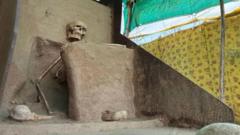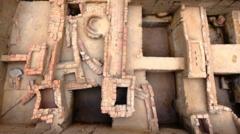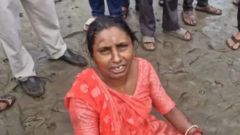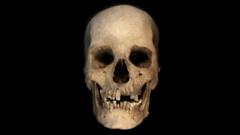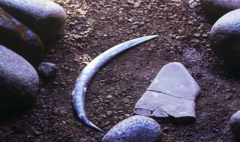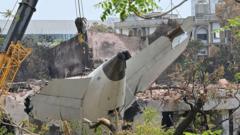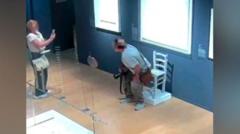The skeleton, which dates back to around 1,000 years ago, was uniquely buried sitting cross-legged and had remained in a makeshift protective shelter for six years. It had been the focus of prolonged administrative disputes that delayed its move to a more secure location after its excavation in 2019.
On Thursday, the skeleton was carefully transported to the Archaeological Experiential Museum in Vadnagar, just a few miles from its original site. Mahendra Surela, the museum curator, assured that the skeleton was handled with extreme care and under the supervision of expert professionals during its transfer.
Before displaying the skeleton, the Archaeological Survey of India (ASI) will conduct thorough examinations, determining the most suitable way to present this rare find. It is currently installed next to the museum's reception area, surrounded by protective barriers, until a more permanent location is decided.
Archaeologist Abhijit Ambekar, who unearthed the skeleton, expressed his satisfaction regarding the find’s newfound recognition. He highlighted its rarity, noting that only three similar burials have been documented across India. Originally, it faced hardships, remaining unprotected and exposed while officials debated responsibilities over the site.
The skeleton is believed to belong to the Solanki or Chaulukya dynasty, which ruled parts of Gujarat from around 940 to 1300 CE, and its preservation benefited from the undisturbed soil that surrounded it. Moreover, the find may provide insights into "samadhi burials," an ancient Hindu practice where distinguished individuals are buried rather than cremated, thus connecting cultural practices with archaeological findings.
On Thursday, the skeleton was carefully transported to the Archaeological Experiential Museum in Vadnagar, just a few miles from its original site. Mahendra Surela, the museum curator, assured that the skeleton was handled with extreme care and under the supervision of expert professionals during its transfer.
Before displaying the skeleton, the Archaeological Survey of India (ASI) will conduct thorough examinations, determining the most suitable way to present this rare find. It is currently installed next to the museum's reception area, surrounded by protective barriers, until a more permanent location is decided.
Archaeologist Abhijit Ambekar, who unearthed the skeleton, expressed his satisfaction regarding the find’s newfound recognition. He highlighted its rarity, noting that only three similar burials have been documented across India. Originally, it faced hardships, remaining unprotected and exposed while officials debated responsibilities over the site.
The skeleton is believed to belong to the Solanki or Chaulukya dynasty, which ruled parts of Gujarat from around 940 to 1300 CE, and its preservation benefited from the undisturbed soil that surrounded it. Moreover, the find may provide insights into "samadhi burials," an ancient Hindu practice where distinguished individuals are buried rather than cremated, thus connecting cultural practices with archaeological findings.

